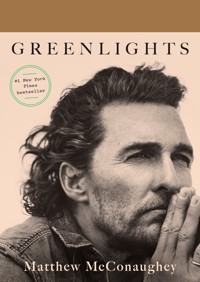Once upon a time in ancient Laos, a deity is said to have cut off his head after the most knowledgeable man in the land correctly answered three seemingly impossible questions about where to find virtue.
Before beheading himself, the deity instructed his seven daughters to annually parade around his severed head, while also bathing it in perfumed water as a sign of respect and also to assure prosperity. Or so the story goes.
Pi mai, as the new year is known, was in full swing in Laos for the first time since 2019. Without pandemic precautions, thousands of people braved the smoggy skies above the historic town of Luang Prabang to join events that bridged the ancient origin story with modern partying. The UNESCO World Heritage town is the most important tourist destination in Laos and an epicentre for these celebrations that took place from 14 to 16 April.
This year marked the end of the Buddhist year of 2565 and welcomed 2566.
The three-day celebration starts on the final day of the year, with the second day technically falling between the old year and new. This is known in Laos as “No Day”, a time when elders fear evil spirits said to roam free in the gap between years.
The third and final day ends this uncertain transition period, marking a fresh start.
Southeast Asia Globe documented a weekend’s worth of festivities: from cheering with fans at the Miss Lao New Year Pageant, to toasting tireless beer drinkers, bumping into selfie-taking tourists at elephant parades and dodging water fights that filled the streets.
Kicking off with a pageant
The Miss Lao New Year Pageant on 12 April marks the official start of a weekend’s worth of festivities and ties into the traditional origin story. The crowned winner, known as Nang Sang Khan, represents the beheaded deity’s daughter. Over the next few days, the crowned winner was the guest of honour in other events, including the traditional parade down Luang Prabang’s main street. For the rest of the city, the crowning means it is time to prepare for traditional celebrations.
Walking with giants in the ‘Land of a Million Elephants’
For nearly 400 years, Laos was known as LanXang, meaning “Land of a Million Elephants.” While elephants play a prominent role in Laos culture – adorning doorways, pagodas and posters across Luang Prabang – only a few hundred wild elephants are estimated to survive. Traditional elephant parades, like this one, split conservationists between respecting local culture and saving the species.
Washing away past sins
At temples across the country, monks place Buddha statues in huts connected to a Naga, a half-serpent and half-human spirit. There, people can pour scented water onto the statues for cleaning. After running over the Naga and cleansing the Buddhas, the water is believed to be holy and can be used to wash away bad luck.
Warding off evil with sand stupas
Hundreds of people flocked to a man-made island on the Mekong River to build sand stupas. The ceremony surrounding the creation of this Buddhist monument – which includes decorations like flags, flowers, flour and candles – is meant to banish evil spirits from entering the new year. After the prayers, revellers began traditional games while the Beer Lao flowed.
Partying in the streets, soaking a city
Before, after and in between traditional new year rituals, people flock to the streets armed with buckets, water guns and hoses to engage in a city-wide water fight. Raucous as it can be today, the traditional practice was gently sprinkling perfumed water on the feet of monks and elders. This symbolised washing away the sins of the past year.
“It’s simply wonderful to be here,” said Penelope Thomas, a tourist visiting from the U.K. “It’s something you can’t really get anywhere else.”
Parading ancient traditions
Luang Prabang rejoiced on the last day of the Buddhist year of 2565 by hosting the annual new year parade ceremony. Dozens of people, including monks, politicians and police took part in the procession, while hundreds of others watched. Not a single person remained dry.
New year, new karma


Burdened with alms bowls, barefoot monks and novices walked across Luang Prabang to receive offerings from devotees. Locals quietly crowded sideroads with baskets of sticky rice and bags filled to the brim with sweets and money. These donations are offered to the monks as a way to earn karmic merit for this year and the next.
Photos by Anton L. Delgado for Southeast Asia Globe.
This story was produced in collaboration with The Mekong Eye and supported by Internews’ Earth Journalism Network.


